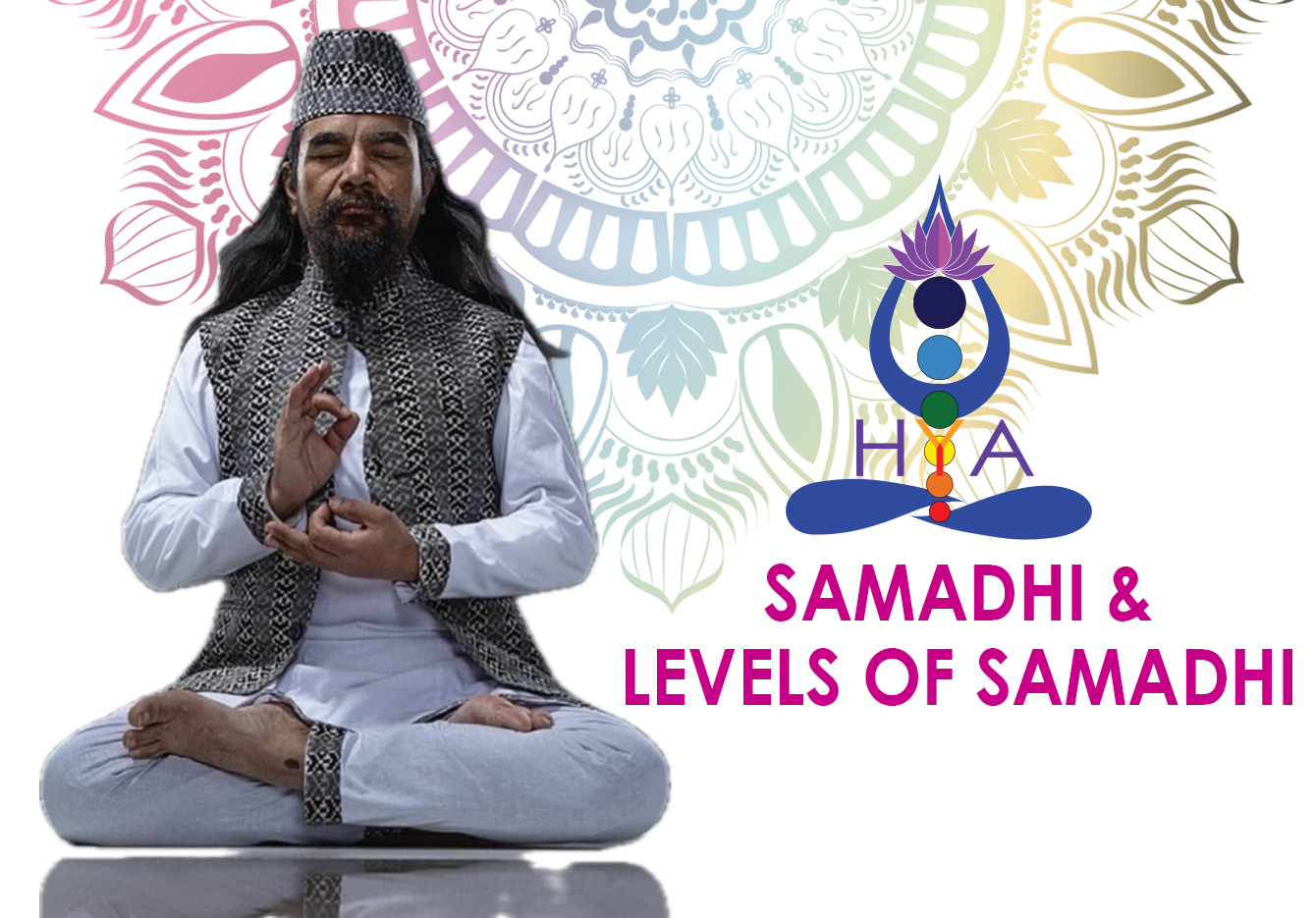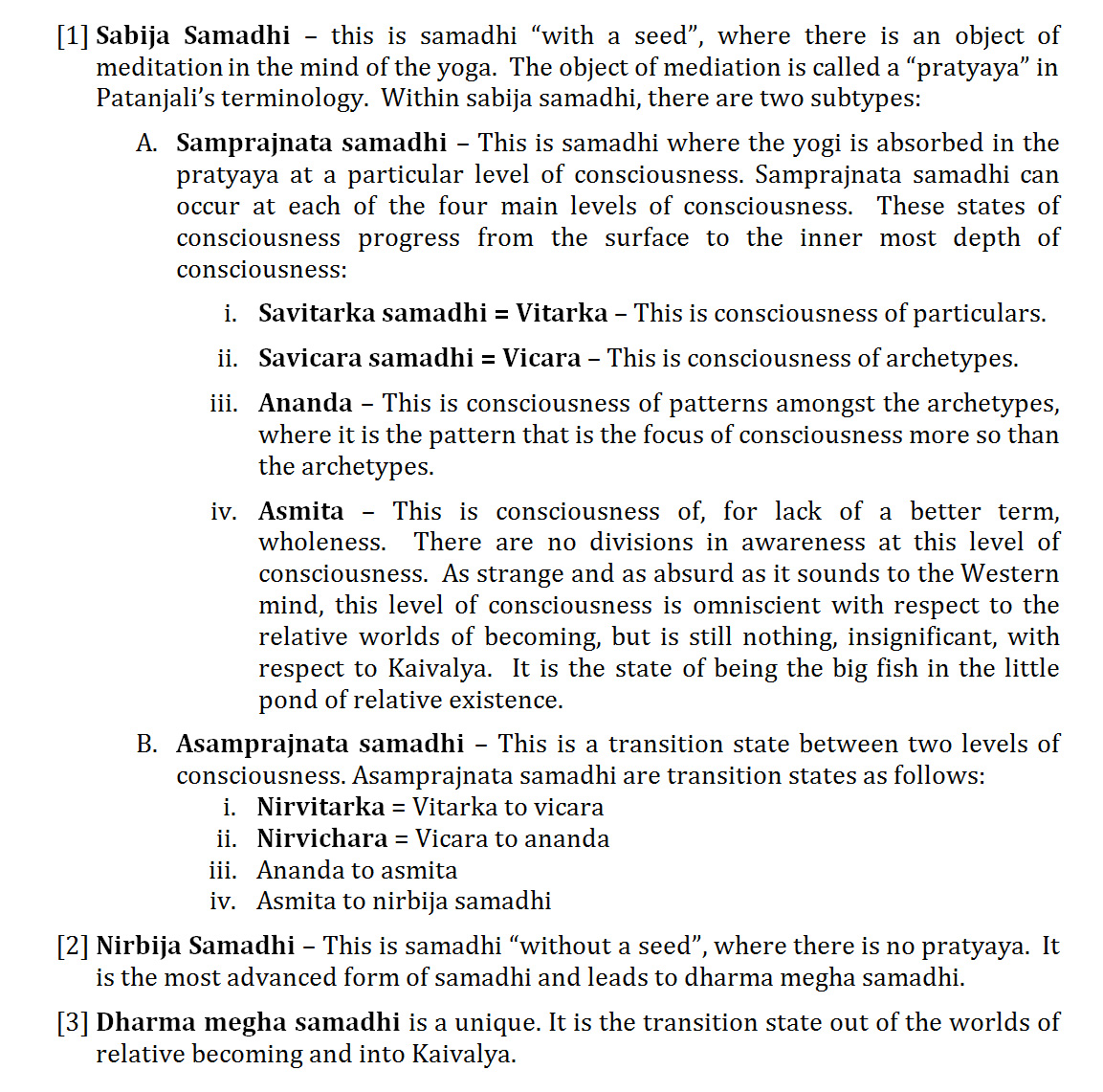
13 Apr 2024 HYN Himalayan Yoga Academy
Samadhi is a state of consciousness where no doership of performance ever arises.
Swami Padmasattva
The purpose of meditation is to achieve samadhi or absolute bliss. This is pure contemplation, super consciousness, in which you and the universe are one. Those who have achieved samadhi are enlightened. In other words, samadhi means freeing yourself from the cycle of birth and death and merging yourself (your soul) with the almighty.
When it is like that it is samadhi, the highest stage of yoga. In that state, there is a complete departure from the memory and so its power of reminding the self of its contents is nullified completely. The self then becomes freed.
What bothers this state of consciousness?
It is hankering, craving, desiring that obscures the shine of understanding and the darkness of doership becomes rock-like. As much this right of lust for objects is reduced so much the daylight of waking into Atmic reality shines out and night is gone.
Samadhi in Vedanta (school of philosophy)
Samādhi is of two kinds: meditation on Nirguṇa-Brahman results in nirvikalpaka samādhi, while meditation on Saguṇa-Brahman leads to savikalpaka samādhi.
Samadhi in Yoga (school of philosophy)
Samādhi (समाधि, “completion”) is a Sanskrit word referring to “intense self-absorption”. It is one of the eight brances of yoga, also known as the eightfold path (aṣṭānga). Also, see the fifth section of the Varāha-upaniṣad.In yoga philosophy, Samadhi represents the stage where the mediator merges with its object of focus and transcends the self altogether to a higher understanding.
The Gheraṇḍasaṃhitā 7.3-6 teaches that rājayoga encompasses six types of Samādhi:
- dhyāna (prduced by śāmbhavīmudrā),
- nāda (prduced by khecarīmudrā),
- rasānanda (prduced by bhrāmarīmudrā),
- laya (produced by yonimudrā),
- bhakti
- manomūrcchā (‘trance’).
Samadhi in Vaishnavism (Vaishnava dharma)
Samādhi (समाधि).—Total absorption and trance of the mind and senses in the consciousness of the Supreme Godhead and service to Him. The word samādhi also refers to the tomb where a great soul’s body is laid after his departure from this world.
Samadhi in Purana and Itihasa (epic history)
Samādhi (समाधि).—The state when the soul (ātmā) and the mind become one. When the soul and the mind mingle with each other as salt and water, it is Samādhi (contemplation). (For more details see under Yoga.
Samādhi (समाधि) refers to “ecstatic contemplation”, according to the Śivapurāṇa 2.3.5.—Accordingly, as the Goddess (i.e., Durgā) said to Menā:—“O beloved of the mountain, I am delighted by your penance. O chaste lady, tell me what you desire in your mind. O Menā, whatever is desired by you by penance, sacred rites, and ecstatic contemplation [i.e., tapovrata-samādhi] I shall grant you and that too whenever you wish for it. […]”.
Svādhāya, Saṃtoṣa, Śauca, Prāṇāyāma, and Samādhi are described while various kinds of impediments to the practice of Yoga and the means of overcoming them are explained in the thirteenth chapter.
Samadhi in Shaivism (Shaiva philosophy)
Samādhi (समाधि, “absorption”) refers to one of the six members (aṅga) of the Ṣaḍaṅgayoga, as taught in the early Śaiva Siddhānta.—Ṣaḍaṅgayoga is taught as the standard yoga of the Śaivasiddhānta (Siddhānta) a mainstream, Veda congruent dualist tradition. See, for example, the 6th-century texts of Raurava-āgama, Kiraṇa-āgma, Sarvajñānottara-āgama, Svāyambhuvasūtrasaṃgraha, the 7th-century Mālinīvijayottara and the 9th-century Tantrasadbhāva.
Types/Levels of Samadhi

Level 1 : Sabija Samadhi
Stage 1. Sarvitarka Samadhi:
Here the mind totally focuses on the gross aspect of a physical object. This is described as “examination” or learning the “inner secrets” of the object. In this stage, every aspect of the object is understood and you gain full knowledge of the physical object.
Stage 2. Savichara Samadhi:
Now the mind moves beyond the outer layers of the object and the subtle aspects of objects (tanmatras) are contemplated or “discerned.” The abstract qualities such as rednesses, beauty, love or the sound, texture, form, flavor, etc. of the object begin to be understood.
Stage 3. Sa-ananda Samadhi:
Here the mind is devoid of the objective world, you move beyond the intellect. There is no reasoning or reflection, just the tranquility of the settled mind. The sattvic (pure) mind is only aware of its joy. The focus is on the inner powers of perception and within the mind itself. It’s known as a “blissful” Samadhi filled with joyful peace.
Stage 4. Sa-Asmita Samadhi:
Now even the bliss has gone and you are just here. Only the satvic (pure) ego, the I-ness remains, the I AM. Simple awareness of individuality—you are here and aware of nothing else. This is the ego-sense in its elemental form. No fear, no desire. This Samadhi can be likened to what is known in the Shankara Tradition as Cosmic Consciousness. The mind becomes fully Awake, it is a state of witnessing the material world and you become aware of the Divinity (Bliss) within yourself.
In Savikalpa Samadhi, the samskaras (latent tendencies or past impressions that condition your life and desires) have not been dissolved. They remain in seed form. The Great Indian Saint, Ramana Maharshi, described Savikalpa Samadhi as “holding on to reality with effort.” In this Samadhi, the concentrated mind can begin to access some of the “lesser” yogic powers (Siddhis).
However, because the ego is still present, you must be careful how you choose to use these powers. If you use them with a pure motive, you can greatly serve humanity and will progress on your spiritual journey with humility. If you choose to use them for personal greed and ambition, you may cause harm and stall your spiritual progress.
Level 2: Nirvikalpa Samadhi
Nirvikalpa Samadhi is a higher state of awareness where the ego and samskaras have been dissolved and only Consciousness remains.
Patanjali says the material world has become like a shadow from which you are completely free. In Nirvikalpa Samadhi there is no mind as you know it—there is only infinite peace and bliss. Here nature’s dance stops, and the knower and the known become one. Here you enjoy a supremely divine, all-pervading, self-amorous ecstasy. You become the object of enjoyment, the enjoyer, and the enjoyment itself.Now the heart is fully awake. In Nirvikalpa Samadhi, the first thing you feel is that your heart is larger than the universe itself. The universe appears as a tiny dot inside your vast heart. Here, there is infinite bliss and infinite power. You not only feel bliss but become bliss.
This Samadhi is similar to the Divine Consciousness described in the Shankara Tradition, a state of deep love for the world and everything in it, recognizing the Divinity in everything. It is entering a celestial realm. You experience Ritambhara Pragya, where your thoughts spontaneously manifest into reality. The past and future are blended into the eternal present. Everything is now. Everything is here. Time and space have been transcended. The exult blissful state may last for a few hours or a few days. Initially, there is no wish to return from this state and it is said that if one stays at this level for 21 days, there is every possibility that the soul will leave the body for good. However, through continued practice, you can come down from Nirvikalpa Samadhi and immediately function normally in the world.
Both Savikalpa and Nirvikalpa Samadhis are considered temporary states in that you can only fully experience them by withdrawing from normal life. Even the Great Enlightened Yogis closed their eyes to meditate. However, the Yogi’s “normal” life is not as most people experience it. A Yogi is living a life fully supported by the Unbounded Field of Infinite Possibilities. Imagine the whole of manifest creation is touching the front of your body and the unmanifest, Pure Awareness is touching your back. You lean forward and you are in the localized world but the non-local is fully there, supporting your every breath. To quote Maharishi Mahesh Yogi, “It’s living 200 percent of life.”
Level 3: Dharmamegha Samadhi
An even higher level of Samadhi is Dharmamegha or the “Cloud of Virtue” Samadhi.
Patanjali says that this level arises when you have lost even the desire to know God or to be Enlightened. This Samadhi cannot be gained by effort, it reveals itself when all effort has dissolved. It is a Divine Gift, beyond notions of Absolute and relative.
When even the temptations of the Yogic Powers cause no distraction, it is said that Pure Knowledge showers down like a Cloud of Virtue, bringing liberation and the Bliss of the Divine. This is Jivanmukta—liberation while still in a physical body. The afflictions of all karmas have been removed, and the Yogi becomes ever-free and shines in his or her glory. It is said that in this state, the Yogi sees without eyes, tastes without tongue, hears without ears, smells without nose, and touches without skin. His/her mere intention can work miracles. The Yogi simply wills and everything comes into being. After this, the yogi reaches the level of ultimate bliss ( kaivalyam ).

References :
1.https://dondeg.wordpress.com/2014/05/28/patanjalis-ten-types-of-samadhi/
2. https://chopra.com/blogs/meditation/the-3-levels-of-samadhi
